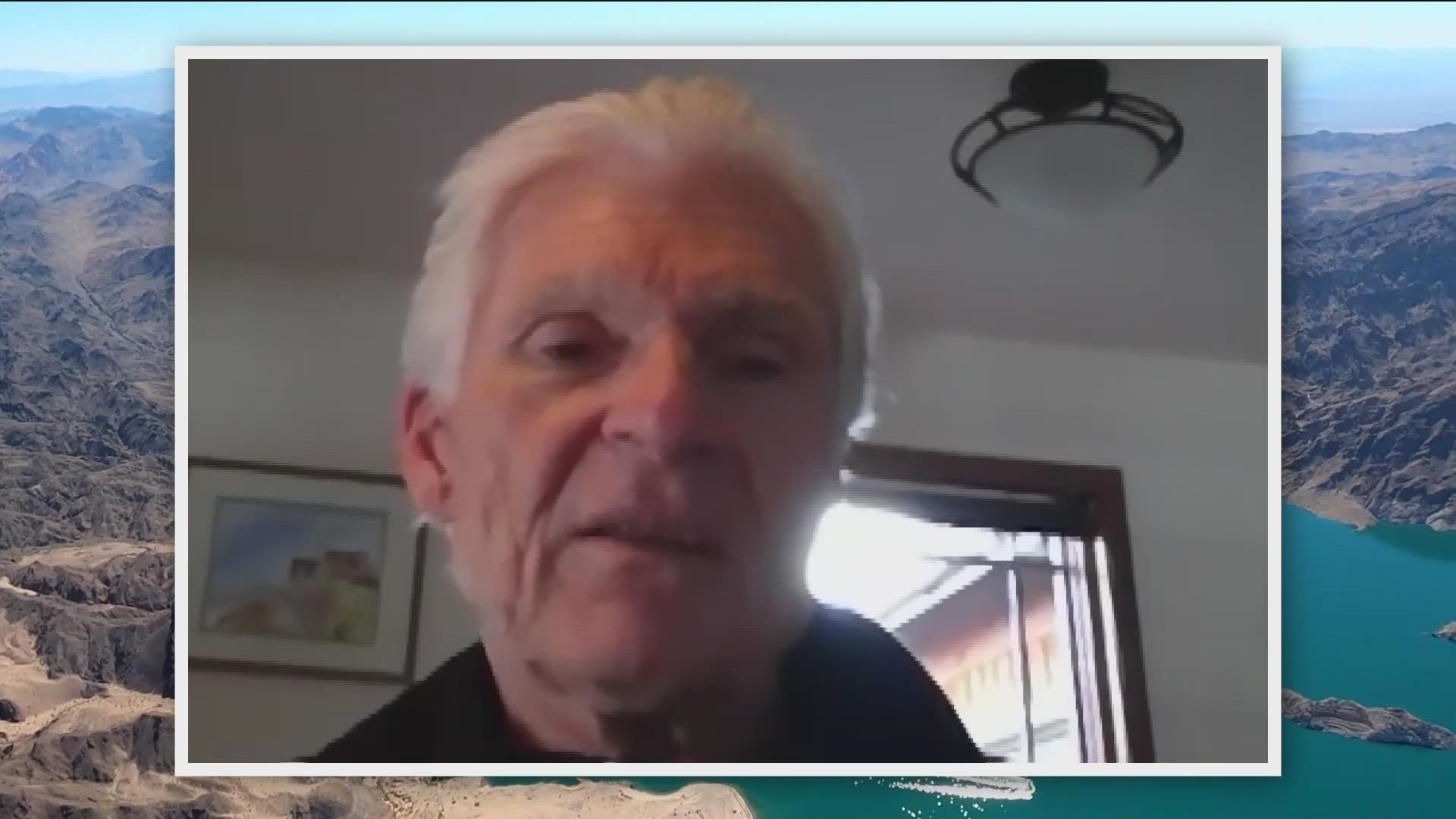BOISE, Idaho — The seven states that rely on the drought-stricken Colorado River are at an impasse. The failure to come to an agreement on water cuts could prompt the federal government to step in with mandatory cuts.
Six states agreed to an outline for cuts, but California is holding out. California has senior water rights and wants Arizona to give up more first.
However, the current agreement in place, the Colorado River Compact, allocates water to states that weren't really there in the first place. That's according to Eric Kuhn, the co-author of the book "Science be Dammed: How Ignoring Inconvenient Science Drained the Colorado River."
In this book, Kuhn and his co-author, John Fleck, detail the decision-making behind the Colorado River Compact.
There were a team of engineers that were using relatively-new technology for the the time, river gauges. The river gauges collected data for about 20 years prior. Coincidentally, those 20 years the river gauges were in place were a very wet time period. So, if the engineers only factored in the gage data, they wouldn't be getting the full picture.
Eugene LaRue was one of the engineers at the time. He looked at some other evidence and saw the Colorado River was subject to 20-year and 30-year droughts. When the time came, policymakers opted to not utilize LaRue's opinion. Kuhn said policymakers from the Bureau of Reclamation were focused on the development and the potential upside.
"They wanted to build Hoover Dam, and the more water that was in the river, the more we could divide up among the states, the more power it would produce, the bigger the benefits," Kuhn said. "They wanted to provide a more positive atmosphere, they were the optimists. They considered LaRue too much of a pessimist, but we today we're looking back, we consider him more of a realist."
There was as much as 20 million acre-feet in the river each year, according to the Colorado River Compact. Kuhn said today, the Colorado River is likely close to 13 million acre-feet.
Fast forward from 1922, the policies to spur growth worked. Communities in the west have grown significantly. Now, it gets complicated trying to scale water usage back. Some people have senior water rights, other have junior water rights. But, no matter how you slice up the allocations, the water was never there to begin with. Unfortunately, there may be even more water supply that is left.
"Now, what we've seen is that because of climate change, we're using more water than nature's providing, and that was okay, when we were drawing the reservoirs down," Kuhn said. "So, consider a savings account, we're drawing down the system to about 15% overdraft per year. Now after 25 years, those full reservoirs are dangerously empty, and we have a crisis where we have to figure out how to cut people back, cut farmers, cut cities back. That's very difficult and it's politically challenging, and it's legally challenging."
Scientists say the current drought across the west resulted in the driest two decades in at least 1,200 years. Their research was recently published in the journal Nature Climate Change. In this research, scientists say human-caused climate change has fueled the problem.
"One of the fears is that the climate change is impacting the river system faster than we can adapt to it," Kuhn said. "I call it the millennial drought. But we've had a number of good, big, wet years. We just have had more dry years than wet years, and one wet year is not going to solve the problem."
Join 'The 208' conversation:
- Text us at (208) 321-5614
- E-mail us at the208@ktvb.com
- Join our The 208 Facebook group: https://www.facebook.com/groups/the208KTVB/
- Follow us on Twitter: @the208KTVB or tweet #the208 and #SoIdaho
- Follow us on Instagram: @the208KTVB
- Bookmark our landing page: /the-208
- Still reading this list? We're on YouTube, too:

